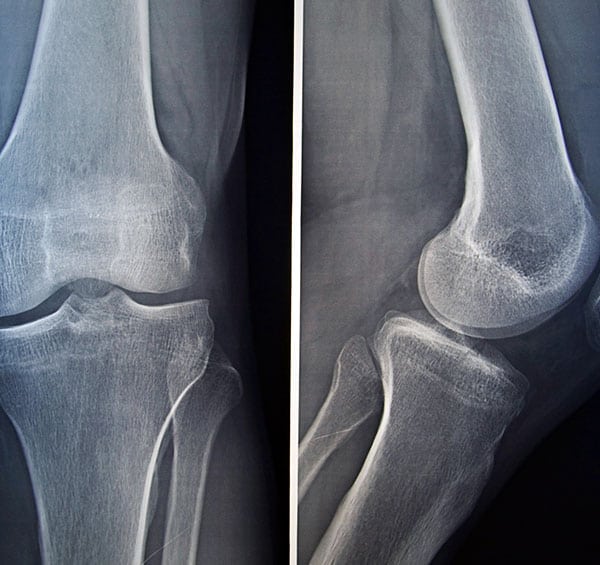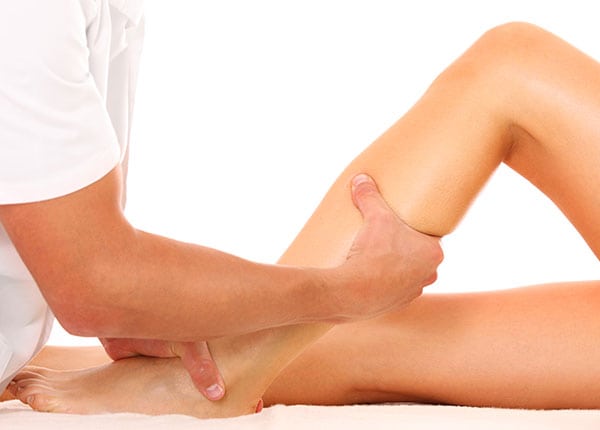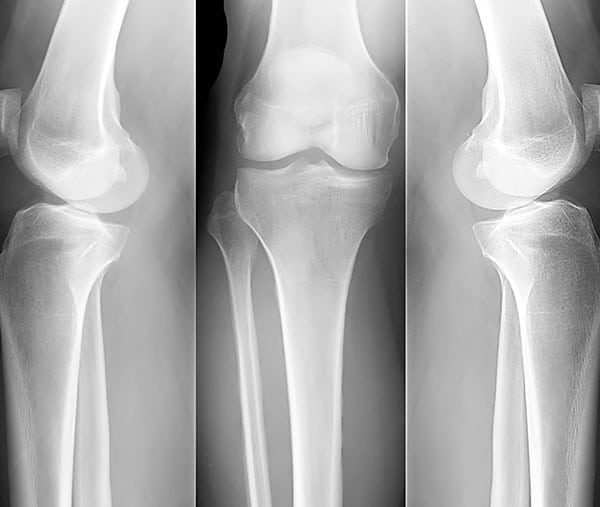Knee Doctor in Orange County
Knee pain typically goes away on its own about 80 percent of time. But when it's accompanied by symptoms that include swelling, stiffness, weakness, instability, or popping noises, however, you may be referred to a knee doctor in Orange County. Since some symptoms of knee pain can be vague, receiving an accurate diagnosis can help determine where to focus treatment efforts. Due to the wide range of pain management options available today, surgery is rarely necessary until damage is severe or other treatment attempts aren't successful. Even when surgery is performed, less-invasive techniques often mean shorter recovery periods.
What Causes Knee Pain?
If acute (sharp) pain is experienced, it's likely due to an injury affecting the knee. However, knee pain that's accompanied by symptoms that change over time to include swelling or warm feeling when the skin is touched may be a sign of an infection. A common source of a knee infection is a fluid-filled sac called a bursa that cushions the knee joint. The resulting swelling could make it difficult to move the knee without pain.
Lateral knee pain occurs outside of the knee. Possible sources of this type of pain include the gradual rubbing of a thick band of tissues against the knee joint (iliotibial band syndrome), damage to cartilage that cushions the knee (lateral meniscus tear), and inflammation of membranes that lubricate the knee joint (synovitis of the knee). Behind the knee (posterior) pain is less common and may involve conditions such as hamstring tendonitis, injury to a small muscle in the back of the knee (popliteus), or swelling in the back of the knee (a Baker's cyst).
In some cases, pain felt in the knee has nothing to do with the knee itself. Sciatica, for instance, often stems from pressure on a nerve root in the lower back that produces radiating pain felt around the knee. A blow to the outside of the knee sometimes affects the peroneal nerve that branches off from the sciatic nerve. Pain in one or both knees may also be due to:


- Arthritis
- Osteoarthritis of the knee
- ACL and other ligament tears or injuries
- Fractures
- Tendon irritation
- Dislocation of the kneecap
Who's at Risk for Knee Pain?
Anyone may develop knee pain at one time or another. However, it's not unusual for an athlete to see a knee doctor in Orange County about persistent discomfort that's making it difficult to maintain optimal performance. Sports involving repetitive motions or sudden jumps, twists, and pivots may also place excess stress on knees. Patients with previous knee injuries can sometimes unintentionally trigger pain again in the same area. Having a previous knee injury, being overweight, or having a general lack of muscle strength and flexibility can also increase your knee pain risk.
How is Knee Pain Diagnosed?
After a physical examination of the affected knee, a knee doctor in Orange County will consider your symptoms as well as any previous history you may have with knee pain. For instance, if you're an athlete, it would make sense to determine if an overuse injury is the source of your discomfort. The diagnosis of knee pain may also involve:
- Image tests (X-rays, MRI and CT scans, ultrasound)
- Blood tests if a knee infection is suspected
- Testing of fluid from within the knee joint (arthrocentesis)
- An exploratory arthroscopy to look inside the knee joint
What Treatment Options Are Available?
If there's not a medical urgency, a knee doctor in Orange County is likely to opt for conservative (non-surgical) treatments as the first attempt at pain relief. Anti-inflammatory medications may be recommended to ease swelling and manage pain from chronic conditions like arthritis that's affecting the knee joint. Therapeutic remedies typically include gentle stretching exercises to restore muscle strength and flexibility.

Some patients benefit from temporary bracing and injections with corticosteroids or hyaluronic acid. Platelet-rich plasma (PRP) is a newer type of injection that may also provide relief. Surgical options include:
- Arthroscopic surgery
- Partial knee replacement
- Total knee replacement
The role of a knee doctor in Orange County is primarily to make the best possible diagnosis based on the symptoms presented and the results of diagnostic testing to treatments will be more likely to be effective. Knee doctors also make recommendations for what can be done to manage pain and steps that can be taken to prevent injuries from occurring again in the future. It's just as important to have realistic expectations of what to expect from treatment, although active participation in physical therapy and rehab can also increase overall function and flexibility of the affected knee.
